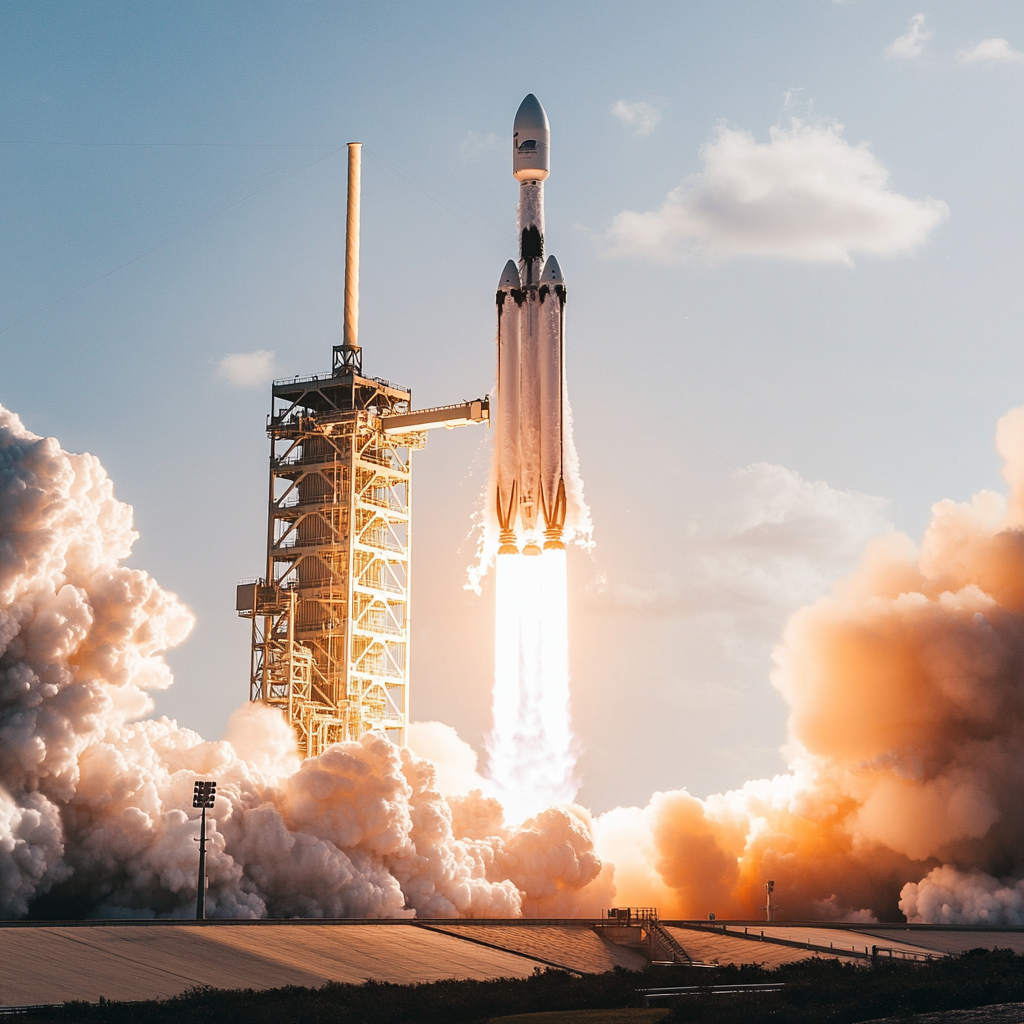
“SpaceX Rocket Sends Private Moon Lander and NASA’s Water-Seeking Trailblazer to Lunar Surface”
On February 26, 2025, the cosmos witnessed a truly electrifying spectacle from NASA's Kennedy Space Center. Forget about those lackluster videos of distant galaxies or the day-to-day routines of astronauts—this was a monumental event where humanity took another step toward unraveling the Moon's secrets. A SpaceX Falcon 9 rocket blasted off into the evening skies, cradling two high-stakes payloads: the Athena lunar lander and NASA's ambitious Lunar Trailblazer orbiter. Let’s dive into this stellar saga, shall we?
Now, you might be asking, "What's so special about this mission?" Well, let’s break it down. As the Falcon 9 soared into the heavens at 7:16 p.m. EST (that’s 0017 GMT on Feb. 27 if you’re looking for an awkward conversion), it didn’t just carry metal and fuel—this rocket embarked with the weight of future lunar exploration.
First in the lineup was the Athena lunar lander, crafted by Intuitive Machines, a Houston-based venture that’s making waves beyond Texas. This sleek and snazzy lander is adorned with ten NASA science instruments, ready to hunt for that elusive lunar water ice. Yes, you heard that right—water on the Moon! Part of NASA’s Commercial Lunar Payload Services (CLPS) initiative, Athena is like the cool kid in school, bringing the might of private industry along for the ride.
Then, there’s the Lunar Trailblazer orbiter, which will snugly orbit approximately 60 miles (100 kilometers) above the Moon’s surface. Don't mistake this for a mere sight-seeing tour; its mission is critical. The Trailblazer is designed to produce the most precise, high-resolution maps of water locations on the Moon imaginable. Think of it as the lunar version of Google Maps, but instead of guiding you to the nearest taco truck, it's finding where H2O hangs out on the Moon!
You see, these two payloads have a leading role in what we might call "the quest for lunar hydration." The Lunar Trailblazer is equipped with some cutting-edge tech—its High-resolution Volatiles and Minerals Moon Mapper (HVM3) and the Lunar Thermal Mapper (LTM) will be scanning the lunar soil for water like a hawk eyeing a field mouse. The HVM3 is an infrared spectrometer that identifies the telltale signatures of minerals and various forms of water. Meanwhile, LTM, designed by the University of Oxford (that’s right, even the Brits are pitching in), will provide insight into the thermal properties and mineral compositions of the lunar landscape. If you ever thought a mere map of water would be boring, think again. This detailed endeavor will uncover where water is stashed, in what form, and how it might shift over time.
But wait, there’s more! This mission isn’t just about rocks and ice; it’s intricately tied to a bigger vision—the Artemis program. Think of Artemis as NASA’s road trip to establish a permanent human presence on the Moon. The data harvested from Athena and Trailblazer will play a pivotal role in identifying accessible water sources for future astronauts. Water isn’t just a luxury—it’s a survival tool. It can be transformed into breathable oxygen and rocket fuel. Yes, you heard that correctly: space travel might one day hinge on lunar water sources, making these missions not just an academic exercise, but a cornerstone for humanity's next great leap. Exciting, right?
But how long will it take to get there? Well, grab your calendars because the Lunar Trailblazer is in for a bit of a journey. Depending on the cosmic conditions, it’ll be four to seven months on its way to the Moon. Once in orbit, the orbiter will kick off a two-year prime mission to keep its electronic eyes peeled on the Moon’s water cycles and other barren landforms throughout our solar system. It’s like having a curious cat on a fresh cardboard box, itching to explore!
Now, let’s sprinkle in some global flavor with this mission. The Lunar Trailblazer isn’t a solo act but rather a vibrant international collaboration, capturing interest from numerous nations. It’s like the United Nations pulled together its finest talents and focused on the Moon. This unified effort is increasingly vital in space exploration, a testament to our collective curiosity and ambition.
And here's the kicker—this mission comes with a price tag. It was initially purchased for $47 million, which later escalated to $62.5 million. A steep price for sure, but think of the wealth of data expected. All those temperature readings, mineral maps, and infrared models amount to science gold.
As we look toward a future where lunar expeditions may not be limited to government-funded missions, we can only hope that commercial partnerships like this will bear tremendous fruit—not just for exploration but as a pivotal step in becoming a multi-planetary species. It’s a thrilling time to be alive, observing our species’ audacious quest to explore the unknown.
The launch of the Athena lander alongside the Lunar Trailblazer orbiter isn’t just some episode of Space Race Redux; it’s a significant stride toward understanding our moon and establishing a sustainable presence there. Remember: the Moon is no longer just Earth’s satellite; it’s a potential next home, a wondrous resource just waiting to be tapped.
Want to stay up to date with the latest news on space exploration and lunar missions? Subscribe to our Telegram channel: @channel_neirotoken for the latest updates and insights. Who knows what cosmic adventures await us next!

